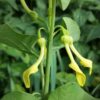Betony (Betonica officinalis)
Flowers: July to September. Height: Up to 60cm (24in).
Also known as Common Hedgenettle, Bishopwort and Wood Betony, its fame was great and highly valued throughout the Middle Ages. Johann Petri’s Herbarius Latinus (1484) speaks of both its magical and medicinal aspects, “having the power to reveal all that is malicious and deadly”.
Medicinal: Once an incredibly popular herb, and, whether drunk or eaten, was used for curing everything you can think of including afflictions of the eyes, the heart, lungs, stomach and bowels, kidneys and spleen. It was also recommended for headaches and migraine, hysterics and nervous afflictions, for fresh head wounds, stimulating the appetite, treating paralysis and epilepsy, reducing fever and violent chills, healing carbuncles, curing jaundice, and lightening a leaden complexion. Betony juice was dropped into the ear to restore lost hearing and was good for eye problems.
Culinary: Used in herbal tea blends.
Magic & Myth: Betony’s fame was so great that the home in which it is planted was believed to be safe from all dangers. It could be drunk or its leaves worn around the neck to prevent nocturnal visitations, terrifying dreams, visions, sleepwalking and nightmares. Hildegard de Bingen’s ‘Causes and cures’ (c.1151) considered it to be “particularly efficacious in countering love spells of a diabolic origin” and stipulated that the bewitched party, whether male or female, must seek out Betony that has not yet been used for either a medicinal or a magical purpose to break the spell.



